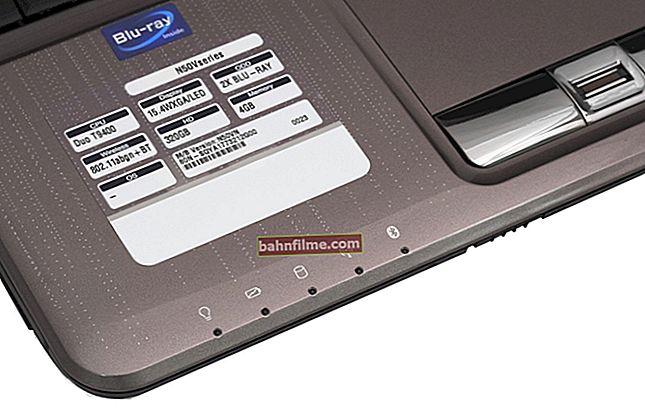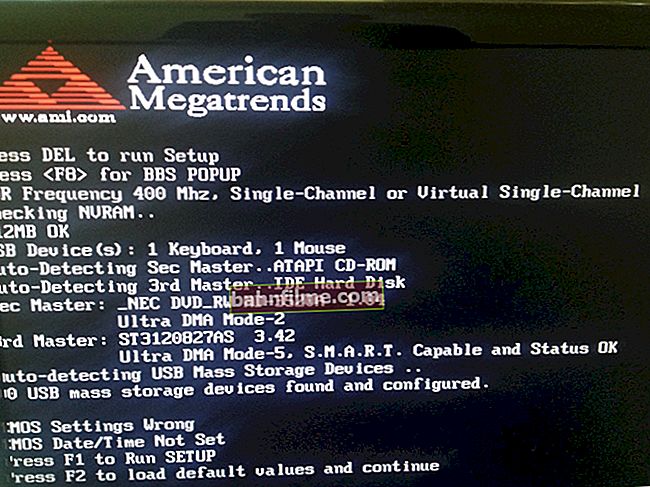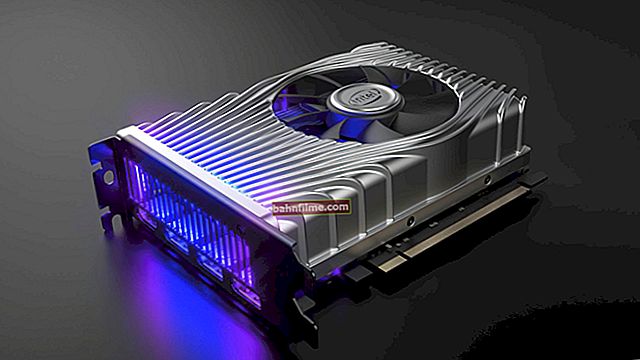
User question
Hello.
I want to buy a laptop, but I don't know which one☺. All users look at the processor, memory - and here I am at the monitor, I don't know where to stop. Basically, DNS offers two types of matrices: TN + Film or IPS (a laptop with an IPS matrix is 2 times more expensive). Which one is better to choose?
Good time everyone!
In general, most inexperienced users are unlikely to be able to notice the difference in image quality on monitors (and many do not even think about it), if they are not shown these monitors together with the same picture. Better yet, twist them in different directions - then ... yes, the effect of an exploding bomb!
But in general, now on sale there are monitors with different types of matrices, most often there are three of them: TN (and varieties like TN + Film), IPS (AH-IPS, IPS-ADS and others) and PLS.
So I will try to compare them in this small article from the point of view of an ordinary user (different scientific terms, such as angles of pixel color, refraction of rays - there will be no ☺). So...
*
Comparison of PLS, TN (TN + Film) and IPS matrices
In the article I will try to indicate the main advantages / disadvantages of each matrix, I will give several photos of adjacent monitors so that you can visually assess the quality of the picture. I think this will make the information more accessible to most users.
Important!
I want to note right away that in addition to the matrix, pay attention to the monitor manufacturer!
Matrix-matrix is different, and even two monitors on TN matrices can show a different picture!
I recommend that you first of all pay attention to proven brands: Dell, Samsung, Acer, Sony, Philips, LG (which have already proven themselves).
And so, let's start with the most popular TN matrix (and its often-encountered TN + Film variant, which, by and large, is not much different from it).
*
TN matrix
If you go to any computer store and look at the characteristics of laptops (or monitors), then the vast majority of cheap and mid-priced devices have a TN matrix.
It has one of the main advantages - it is quite cheap, while providing (in general) a very good picture!

IPS vs TN + Film makes a difference! // On the other hand, you are not sitting in front of the laptop on the side (maybe even better - no one from the outside will see what you are doing!)
The main advantages of TN matrices:
- one of the cheapest matrices (thanks to this, many can afford to buy a laptop / monitor);
- short response time: any dynamic scenes in games or movies look good and smooth (if the response time of the monitor is insufficient, such scenes can "float", see example below). On monitors with a TN matrix - this, most likely, will not happen, tk. even cheap models have a response time of 6 ms and below (if the response time is more than 7-9 ms - then in many games / movies - you will experience discomfort in sharp and fast scenes).
- no one from the outside will understand your picture: for those who look from the side or from above, it becomes faded and it is difficult to distinguish colors on it (example in the photo above and below ☺).

IPS versus TN (tablet and laptop, for comparison). Top view of the same picture!

IPS matrix (glossy screen surface) versus TN matrix (matte screen surface). The same picture

The response time on the example of a sports broadcast: on the left - 9 ms, on the right - 5 ms (when viewing it seems to be not striking, but if you take a picture of nearby monitors, then the difference is STILL noticeable!)
Disadvantages:
- it is necessary to sit correctly and look directly perpendicular to the monitor: if you lie down slightly on an armchair while watching a movie (say), the picture becomes less colorful and poorly readable;
- low color rendering: if you work with photos (and indeed with graphics), you will notice that some colors are not so bright, and they look better on other monitors;
- the probability of the appearance of dead pixels on this type of matrix is higher (a dead pixel is a white point on the screen that does not transmit a picture: that is, it does not glow in any way. Usually it is just a white point on the screen).

2 laptops with different matrices
Output: If you like dynamic films and computer games (shooters, races, etc.), then TN + Film matrix is a very good choice. In addition, if you read a lot, then less bright light from the monitor has a more positive effect on your eyes, they get tired less.
For those who work with graphics (take a lot of photographs, edit photos and pictures) - a monitor with a TN matrix is not a very good choice due to its lower color rendering.
Important!
By the way, many users (who work a lot and for a long time at the PC) also, like me, note that not always a bright and juicy picture has a positive effect on the eyes. Some people specifically buy monitors with a TN matrix, because eyes get tired of them less.
And, I think, there is a bit of truth in this (I have worked for both IPS and TN for a long time - and now I have come to the conclusion that I work for a matte monitor with a TN matrix). In general, I expressed my opinion about the problem of eye fatigue in this article: //ocomp.info/ustayut-glaza-pri-rabote-za-pc.html
PS: I'm really not a designer, and I don't work much with photos and bright illustrations, so it's not the ultimate truth ☺.
*
IPS and PLS
The IPS matrix was developed by Hitachi, and distinguishes it from TN, above all, better color reproduction. True, I would like to note right away that the manufacturing price has increased several times, so monitors based on this matrix are several times more expensive than those on TN.
As for PLS, this is Samsung's development, as an alternative to IPS. And it is worth noting that the development is very, very interesting: the brightness and color rendition on it (in my opinion) are even higher than on IPS (take a look at the photo below).

IPS vs PLS matrices
Moreover, monitors on a PLS matrix have a lower power consumption compared to the same TN or IPS (by about 10%), which can be very important when the devices are running on rechargeable batteries.
Both PLS and IPS matrices have good viewing angles: the picture does not distort and the colors do not lose their brightness and hue, even if you stand at an angle of 170 degrees (which means that everyone sitting to the right / left / center of the monitor will see the same high-quality picture).

IPS vs PLS - one more photo
It is also worth adding that the PLS matrix allows you to achieve a short response time, almost the same as on TN matrices. But when choosing an IPS matrix, you need to be especially careful about this parameter: tk. Not all monitors have a response time of 6 ms or less (although, I would already be guided by 5 or less ☺).
If you often spend time with dynamic scenes in games, then an inexpensive monitor with a high response time on an IPS matrix is most likely not the best choice.
As for IPS, it has many varieties (I will give some here, but that's not all ☺):
- S-IPS (or Super IPS) - this variation with improved response time;
- AS-IPS - with improved contrast and brightness;
- H-IPS - a more natural and natural white color;
- P-IPS - increased number of colors (considered one of the best monitors in terms of accuracy and picture quality);
- AH-IPS - similar to P-IPS, with improved viewing angles and more natural several shades (in fact, it is not much different from the previous one, except for a higher price);
- E-IPS is a cheap type of IPS matrix, usually found on relatively inexpensive devices. However, even this type of matrix outperforms most TN + Film.
*
PS
By the way, when buying a monitor MANDATORY pay attention to the type of surface, there are: matte and glossy.
Matte - good because they do not show your reflection and glare, but they are not as bright and not so "juicy" convey the picture as glossy ones. If you often work on the street or your room is often lit by the sun, then take a closer look at the matte surface (or its kind: anti-glare).
👉 Help!
Is a glossy or matte surface better? Tips for choosing a monitor
*
That's all, for additions on the topic - a special thanks ...
Have a nice day!
👣
First publication: 15.12.2017
Correction: 02/10/2020









